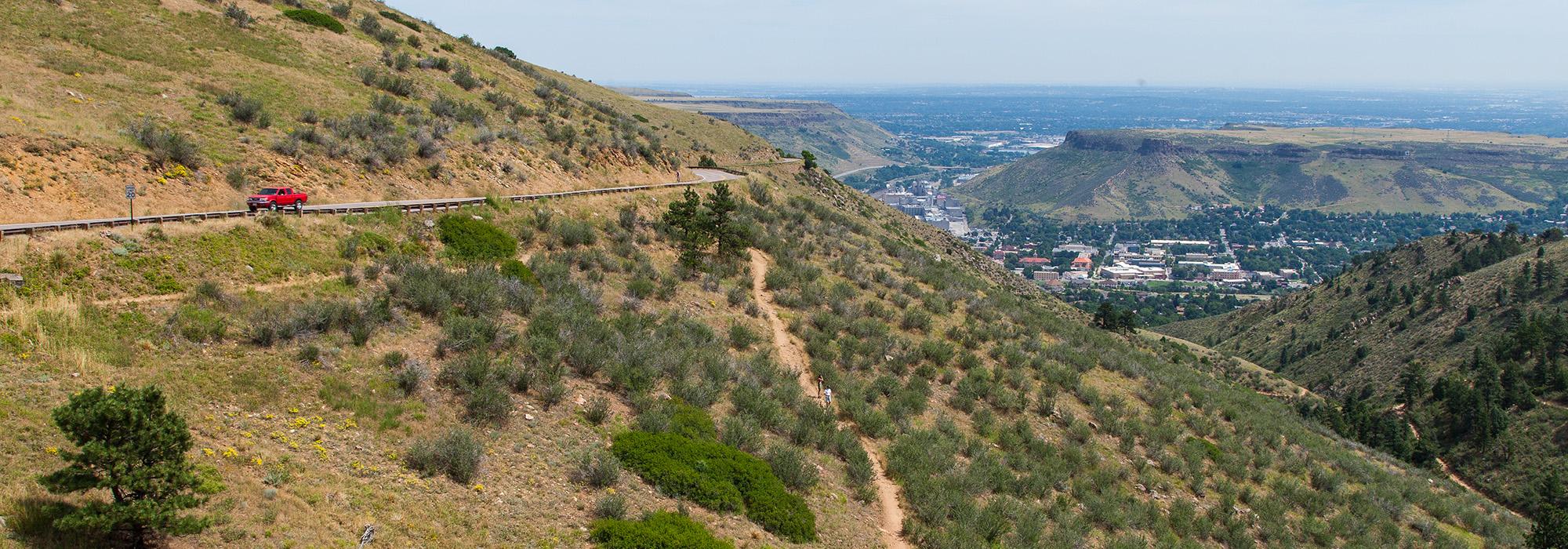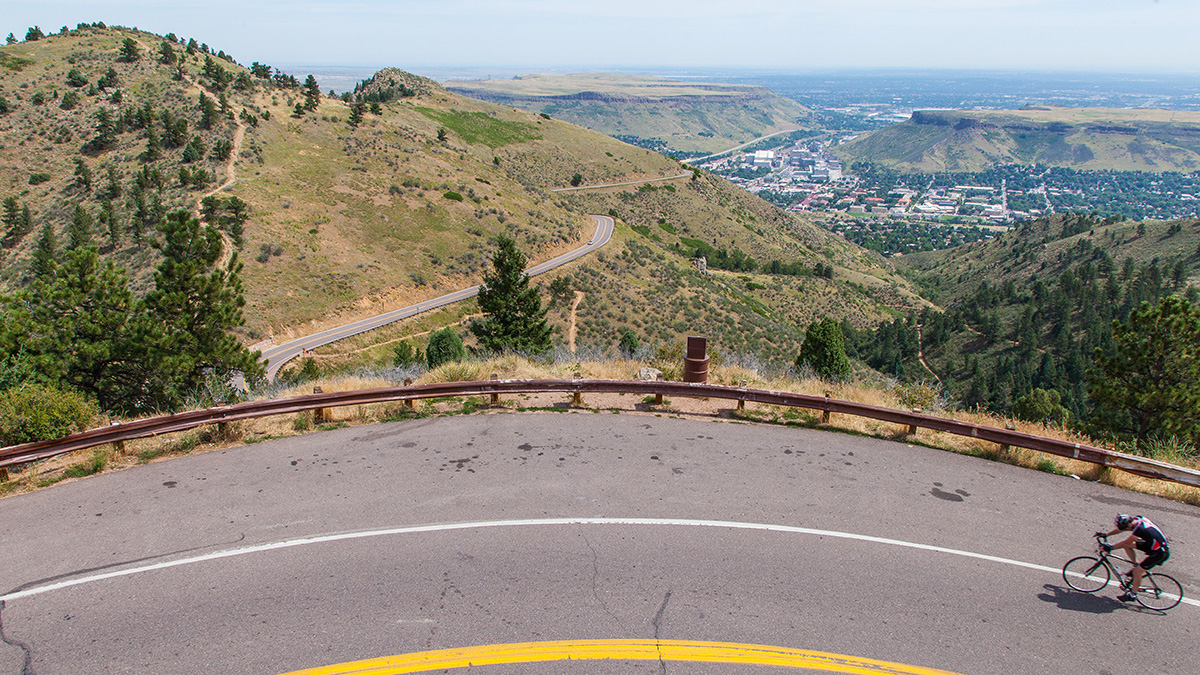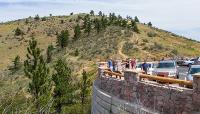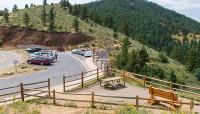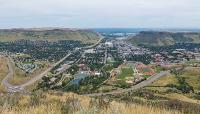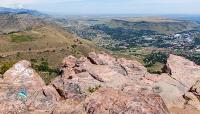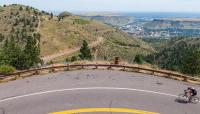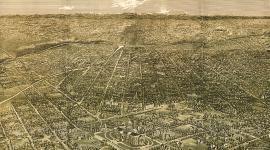Landscape Information
Serving as the northern entrance to the Denver Mountain Parks System, this 4.3-mile-long scenic drive switchbacks its way along the eastern slopes of Lookout Mountain, gaining some 2000 feet of elevation. Beginning in 1910, William “Cement Bill” Williams surveyed the steep slopes west of Golden and, by 1911, had cut the two-foot-wide Lariat Trail partially up the mountain. With the signing of the Mountain Parks bill in 1913, state funds became available to Williams and the road was open by the end of the year. Maximizing vistas and creating a pleasurable driving sequence, Frederick Law Olmsted, Jr. provided early designs, later carried out by S.R DeBoer. The twenty-foot-wide road maintained a grade of no more than six percent, with gradual turning radii and hairpin turns.
Passing from the shrubs and grasses of the lower elevations to the evergreens and rocky outcroppings at the high points, the drive provides dramatic views of the expansive plains below. Scenic overlooks at Sensation, Windy, and Wildcat Points, and the Beaver Brook Trail trailhead at Windy Saddle, invite drivers to stop and explore. Stone retaining walls and guardrails—and a springhouse constructed in 1916 in the shade of pine and spruce—exemplify high degrees of craftsmanship. With the opening of Lookout Mountain Park at the summit of the drive in 1917, two rough-hewn native stone pylons were erected on sides of the road at the bottom of the climb. Standing 35 feet tall, the pylons include arched pedestrian entrances; the eastern pylon bears the inscription “Entrance to the Denver Mountain Parks.” Lariat Trail Scenic Mountain Drive was listed in the National Register of Historic Places in 1990.



